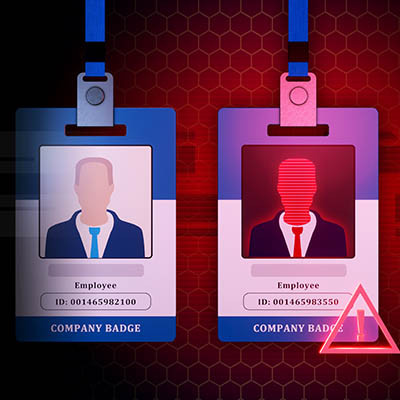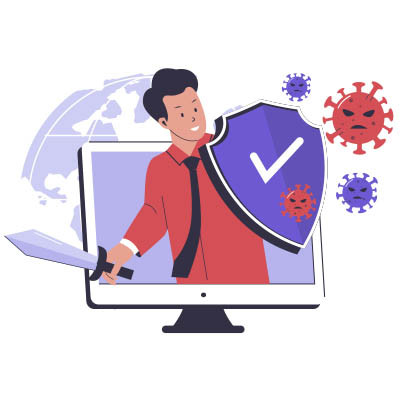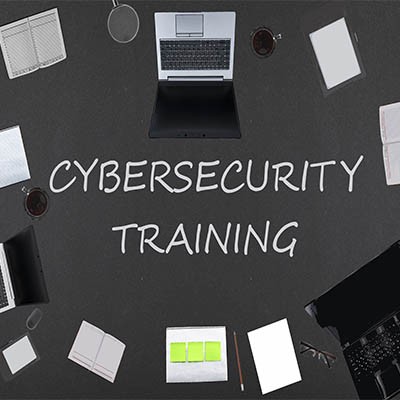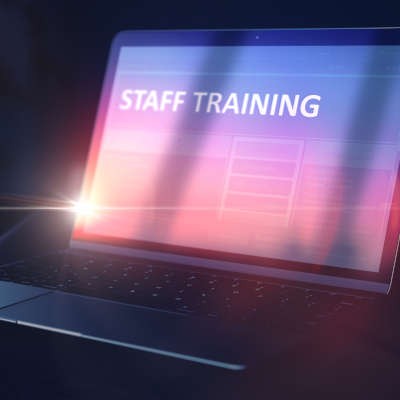PCSOFT Blog
Your employees might be putting your business at risk, even if they don’t know it yet. Most companies feel this frustration, and they want their employees to prioritize cybersecurity in the same way administrators and security staff do. This frustration is something that can be challenged and addressed… with the right solutions and policies, of course.
All businesses have one key vulnerability that cybersecurity threats exploit: their employees. Your business has this vulnerability, too, even if you haven’t considered it. Just like any vulnerability, however, there is a patch, and it comes in the form of education. With an appropriate knowledge base, your team can effectively become a human firewall against any potential threat.
Your business depends on technology, but it’s rare that all employees at an organization understand the importance of it. More often than not, technology is so ingrained into operations that employees can get overwhelmed by it. Today, we want to share three top tips that will help your employees better understand the technology they use on a day-to-day basis.
Cybersecurity training can be an overwhelmingly annoying issue for everyone. Unfortunately, it’s a must. Understanding the reasons behind this reluctance can help organizations tailor their training programs to be more engaging and effective. In this month’s newsletters, we go into four common reasons why employees might harbor disdain for cybersecurity training.
A competitive business can adapt to change with new technologies and innovate in their industry. Unfortunately, where innovation and new technologies are concerned, businesses often experience considerable pushback from employees who might not understand how the new solutions support the company’s mission. How do you get these employees on board?
When it comes to cybersecurity, businesses have a lot to worry about, with the costs associated with protecting a network (or responding to failed attempts to protect your network) dominating these costs. While it is incredibly important to protect your business in any way possible, it is often not enough, and even the most careful companies fall victim to attacks.
At the heart of it, cybersecurity preparedness is a team effort, not necessarily a singular one. Everyone must be aware of and engaged in cybersecurity best practices. As such, training is a necessity. To help you ensure that your cybersecurity training is as effective as possible, we’ve put together a couple of curriculum design tips and tricks to keep in mind.
When many businesses look to add to their teams, they typically have a series of qualifications they need each applicant to meet before they grant interviews. They make their selection, do their entrance training, and then expect that the new hire will settle in and be as productive as possible as soon as possible.
Your organization’s network security is dictated in part by your security solutions, but your employees also play a large role in maintaining it. If you want to make sure that your employees are not inadvertently putting your organization at risk, you need to ensure they are getting the proper security training. Here are a couple of ways you can make security training less like pulling teeth and more engaging for your employees.
The nature of many of today’s businesses is building one product over and over and over. When you have that level of repetitiveness, it helps people find their niche, yes, but it can also result in the attention given to the task to suffer. While a disengaged employee is nothing new, they can cause some operational problems. By and large, a couple of staff hiccups won’t have a huge impact on your business, unless that lack of engagement impacts your cybersecurity. That’s because there are some threats out there that could absolutely cripple your business’ ability to sustain operations. Today, we’ll talk about how to get your staff to care about malware, hackers, and the like.
With so many different technologies being used in business, it can sometimes be too much for the people out there who aren’t as tech savvy as others. In fact, some of the people you will work alongside will not be able to grasp some of the simplest technology concepts. Unfortunately, these people don’t know a fraction of what they need to about the technology they use, and it could put your organization at a disadvantage. This month, we thought we’d give you a few pointers on how to talk to your less-technology-inclined co-workers.
Millions of people find themselves sitting in front of a computer moving files around and corresponding with people over the phone, through email, or updating info in the company’s line of business app. What many of them don’t know, however, is that, at any time, they are only a couple of clicks away from causing major problems for their company. Therefore, it is extremely important to train your staff on what to look for and how to address those situations when they do arise.
Do you know those horror stories you catch every so often where a huge business has their network hacked and millions of their customers and employees have their personal and financial information leaked onto the dark web? Your organization isn't likely as big as theirs, but regardless of how much money, people, and diverse revenue streams an organization has, having its network breached and its customers’, or its employees’, information strewn about over the dark web is not an ideal scenario.
Growth can be very exciting for a business. It generally means that all the hard work that has gone into getting the business to that point has paid off. For some in your organization however, it can be a very stressful time. This is because once you commit to pay new employees, there’s some pressure to get them up to speed quickly. After all, what are you paying them for?
Disasters lurk around every corner in the workplace, even on an end-user level. All employees of a business should understand how to identify specific office disasters and what to do when they are encountered. We’ll discuss some of the most common (and deceptive) disasters, as well as how your team should handle them on the off chance they show themselves.
If we asked you to identify the biggest risk to your business’ network security, what would you think it would be? Some might think that the countless threats on the Internet are the biggest issues your organization will have to deal with, while others might think natural disasters represent the biggest problem for your business. Many others, however, see the end user as the biggest threat to their business, and they are right… to an extent.
Here’s the thing about IT security: it requires a little more than a decent firewall and a reasonably-strong password. We talk a lot about how to ensure that your business’ network stays a top priority, and the best way to do that is to implement what we call a Unified Threat Management (UTM) solution. An enterprise security system like a UTM can provide a considerable improvement for the way you protect your organization, but even something as simple as a little bit of user error could bypass these protocols.
One of the best ways to progress in business is by looking at what doesn’t work, and learning from it. Nowhere is this more true than in the realm of cybersecurity. You can find out how best to protect your network by looking at what has happened in the past, as well as what cyber attacks other organizations have suffered from.
If you recall, 2016 was filled to the brim with high-profile hacking attacks. By taking at look at the worst threats from last year, you can better protect your organization in 2017.
Return to the Basics: Security and Training
You’ve seen the headlines about huge data breaches that expose millions of users’ credentials or sensitive information. It’s important to understand why these big attacks happen, especially as vulnerabilities increase in number. The more that security problems are ignored, the more dangerous they become as time goes on.
A good way to protect your organization is by educating employees on how to take advantage of security best practices. This includes enforcing common-sense protocols like password security, as well as how to avoid phishing attacks and questionable online content. Furthermore, take advantage of preventative security solutions that keep workers from being exposed to security risks in the first place.
Make Sure Your Endpoints are Properly Protected
How many devices do you have connected to your network? This includes servers, workstations, any device which has access to the Internet, Internet of Things devices, and even mobile devices. How many of these endpoints are protected from external threats? The answer: probably not all of them.
As a business owner, being aware of which devices are accessing which data should be one of your chief concerns. You need to be intentional about data security by reinforcing digital protections and improving physical security protocols. Security solutions like encryption, access control, firewalls, and mobile device management are capable of helping your business keep its data secure.
Never Stop Improving Security
Network security isn’t something that you can implement once and leave alone. The best security professionals understand that security must always be improved upon, as the threats facing your organization will continue to improve themselves. This is why security updates and professionals are needed; they resolve critical flaws that pose a threat to your organization. Additionally, compliance with HIPAA, HITECH, and other regulations should be met in order to better safeguard your organization.
These are cybersecurity measures that your organization should take, especially if you want to sustain your business. How are you protecting your business in the upcoming months and years? PCSOFT can help reinforce your organization’s network. To learn more, reach out to us at 02 98730080.




















